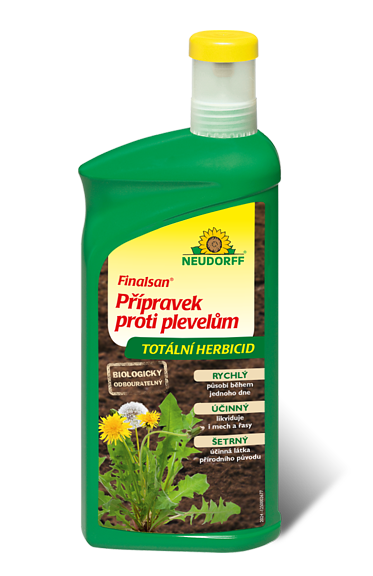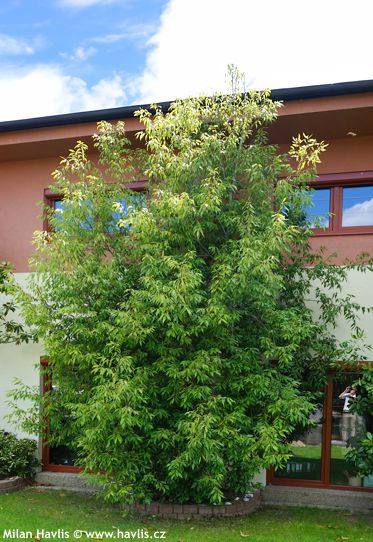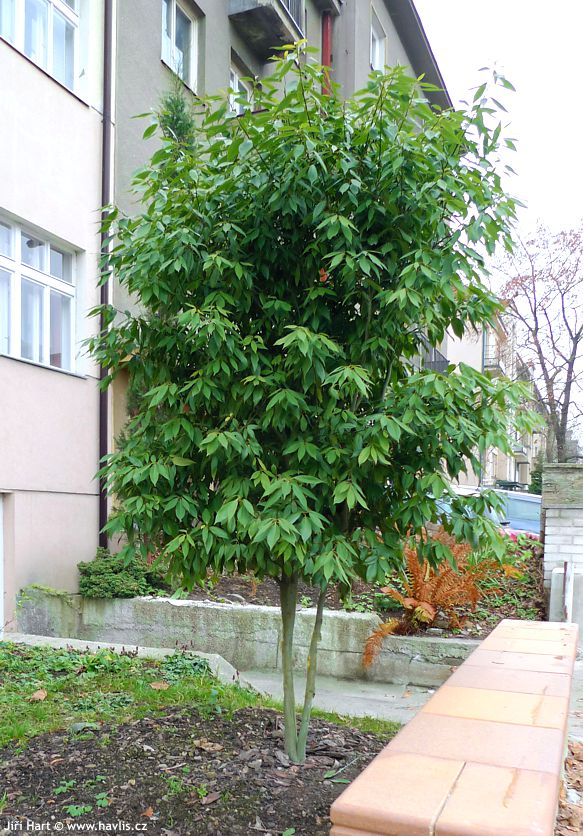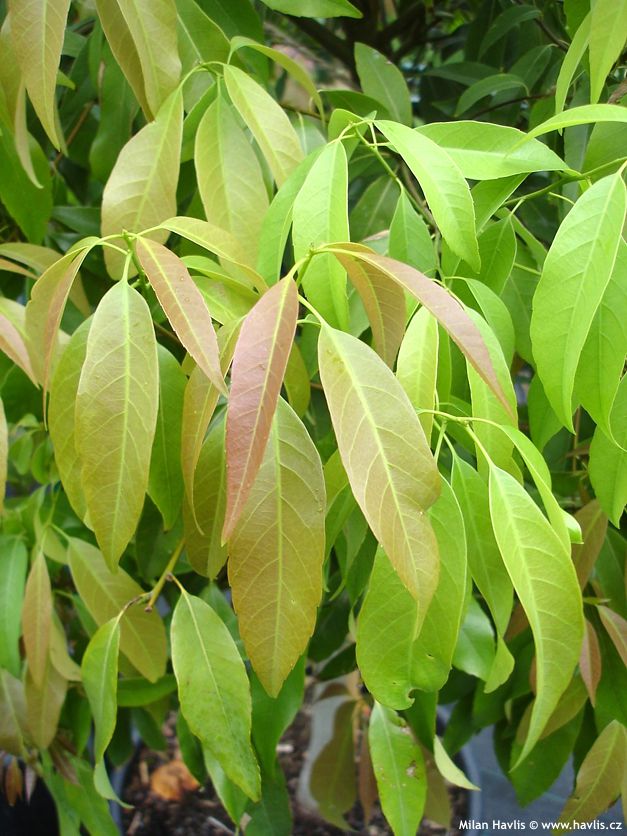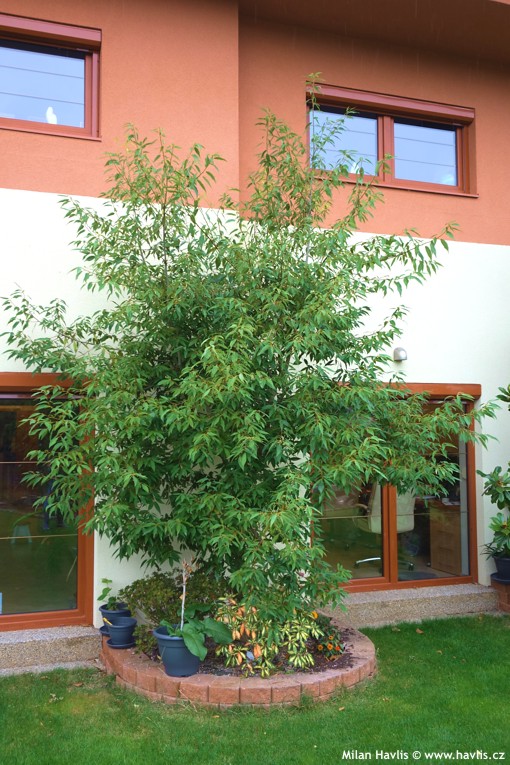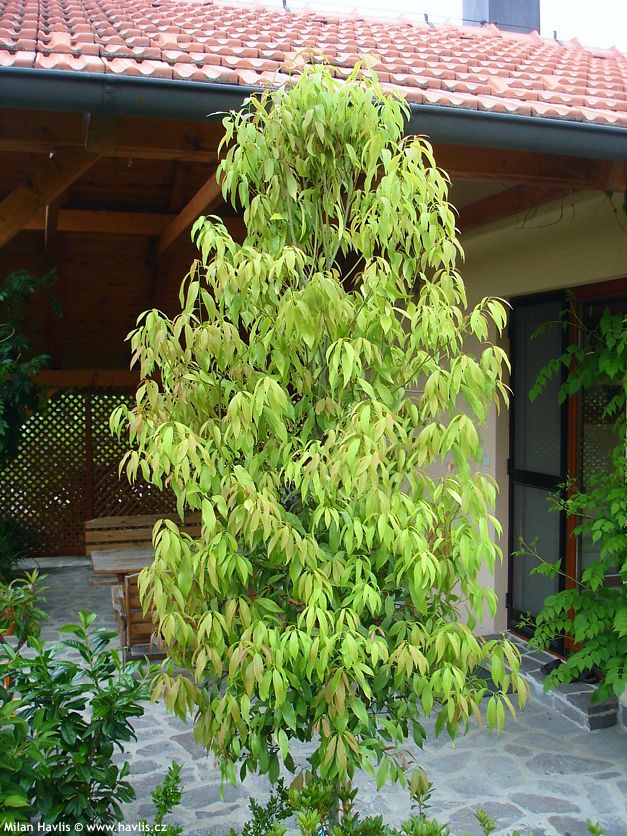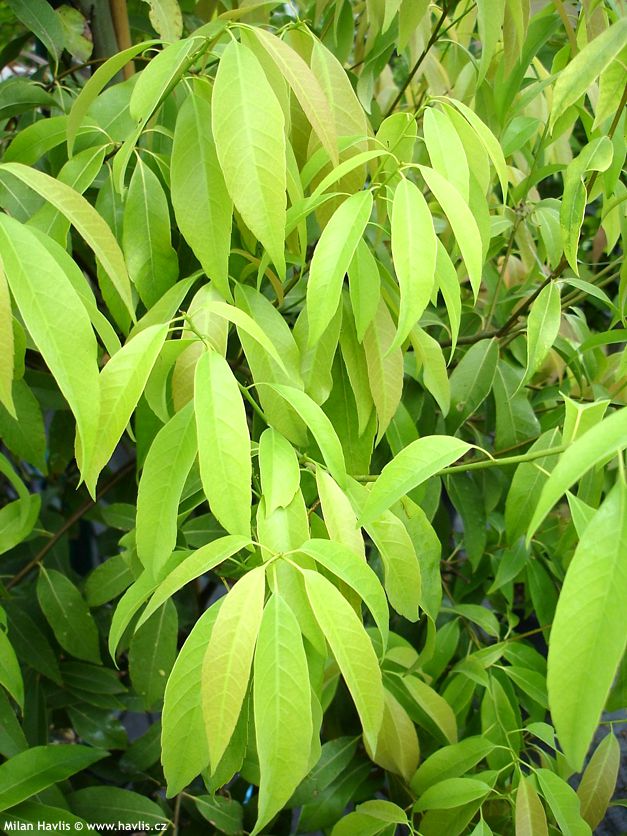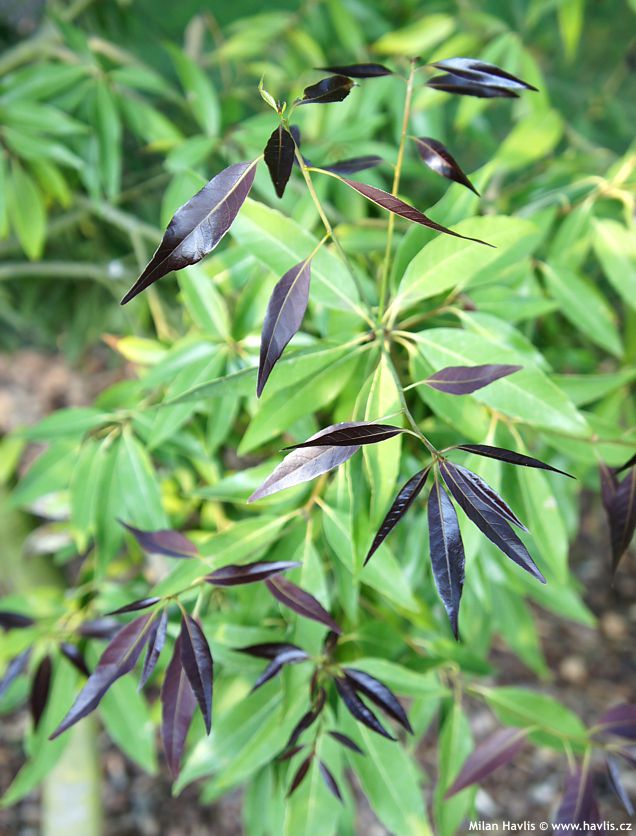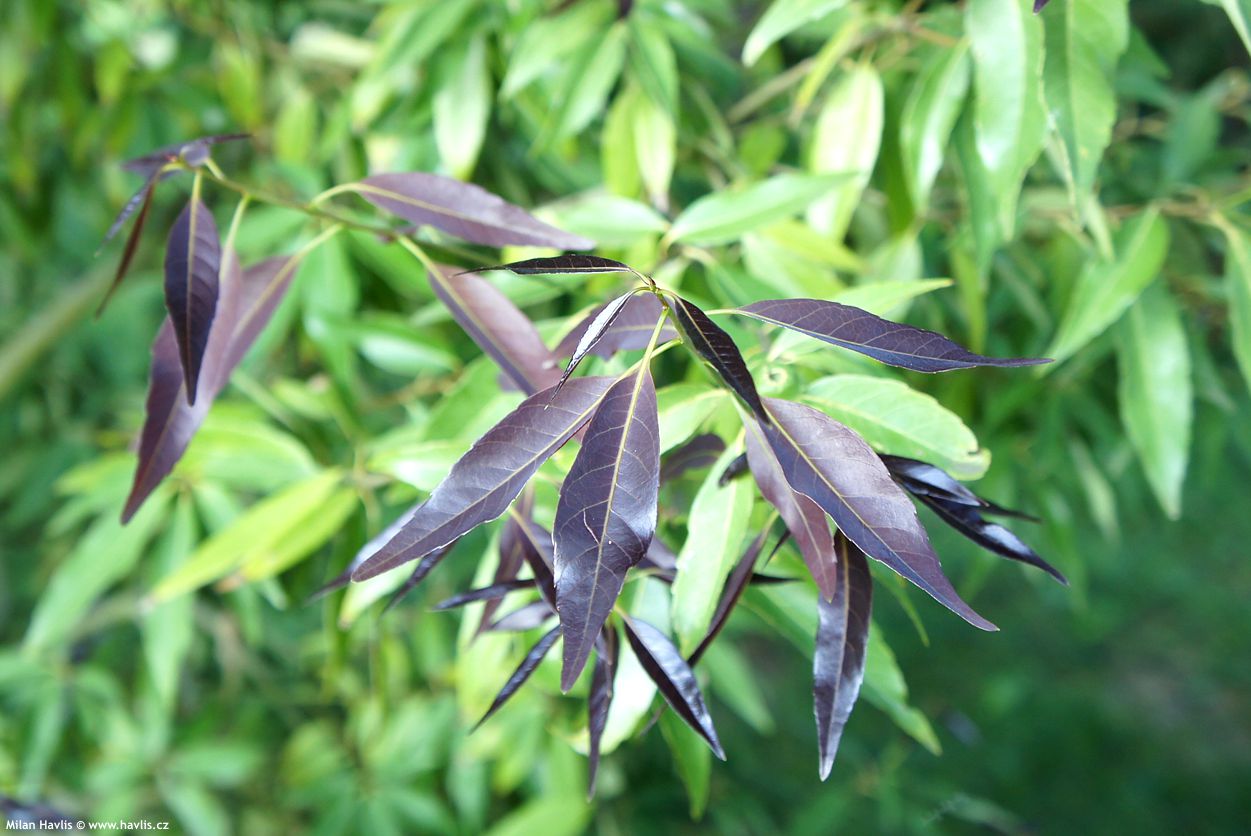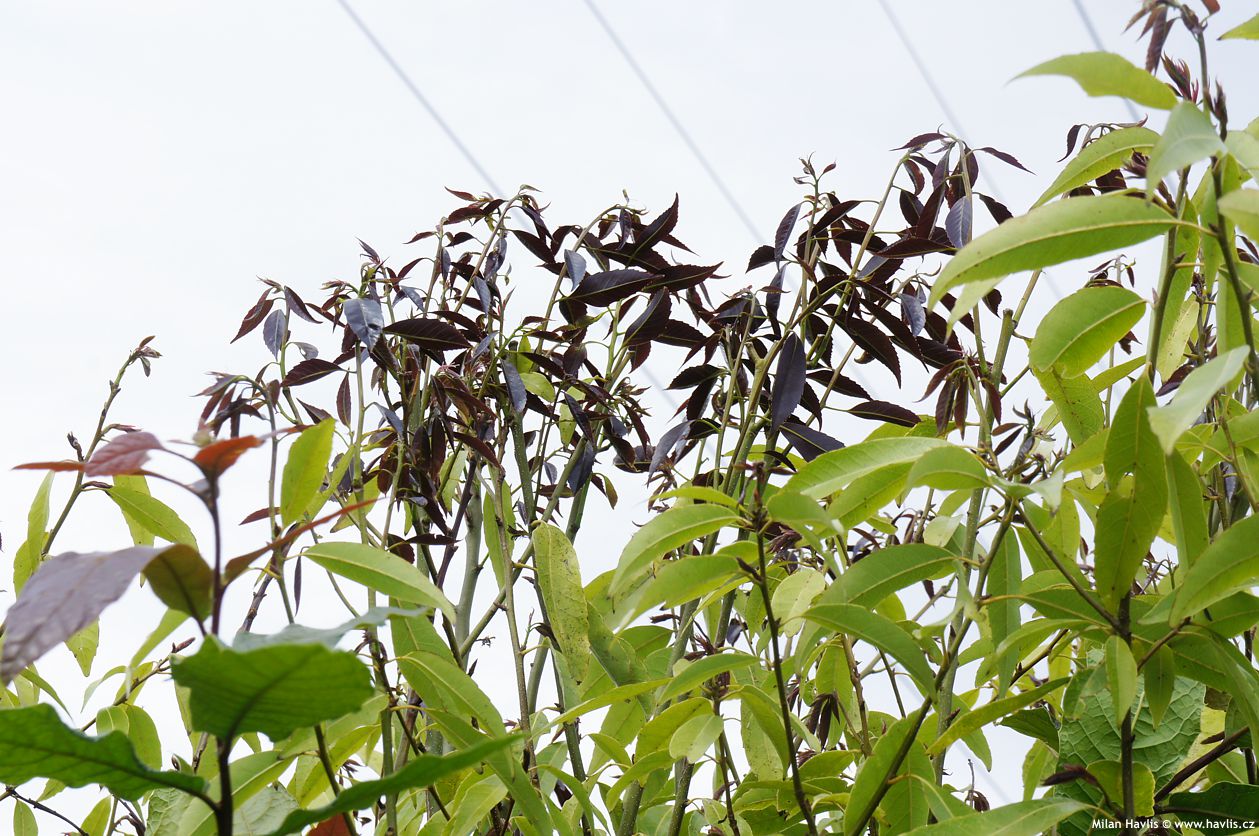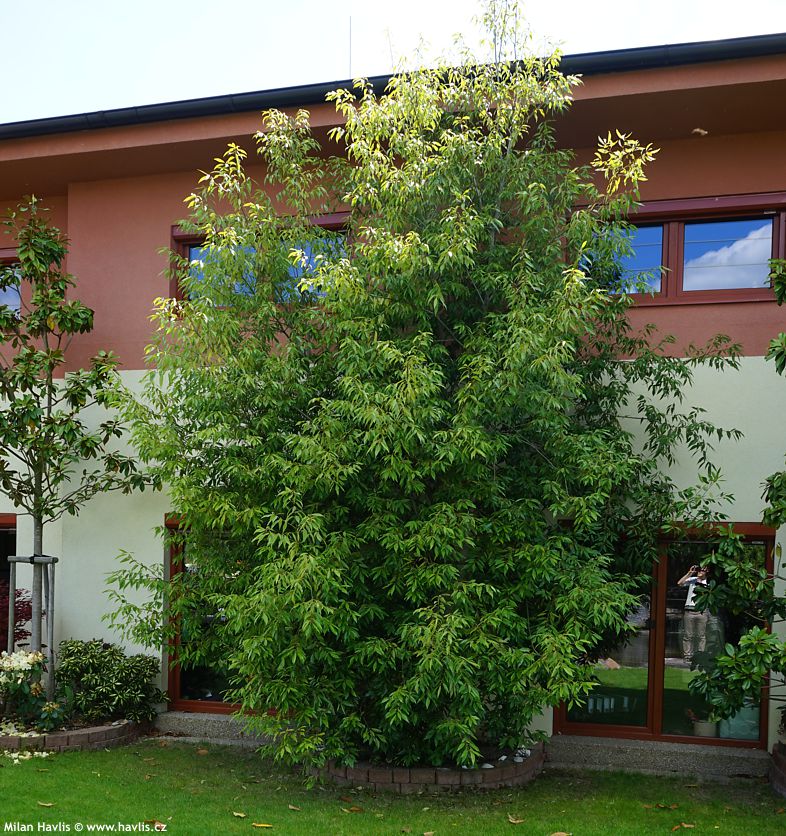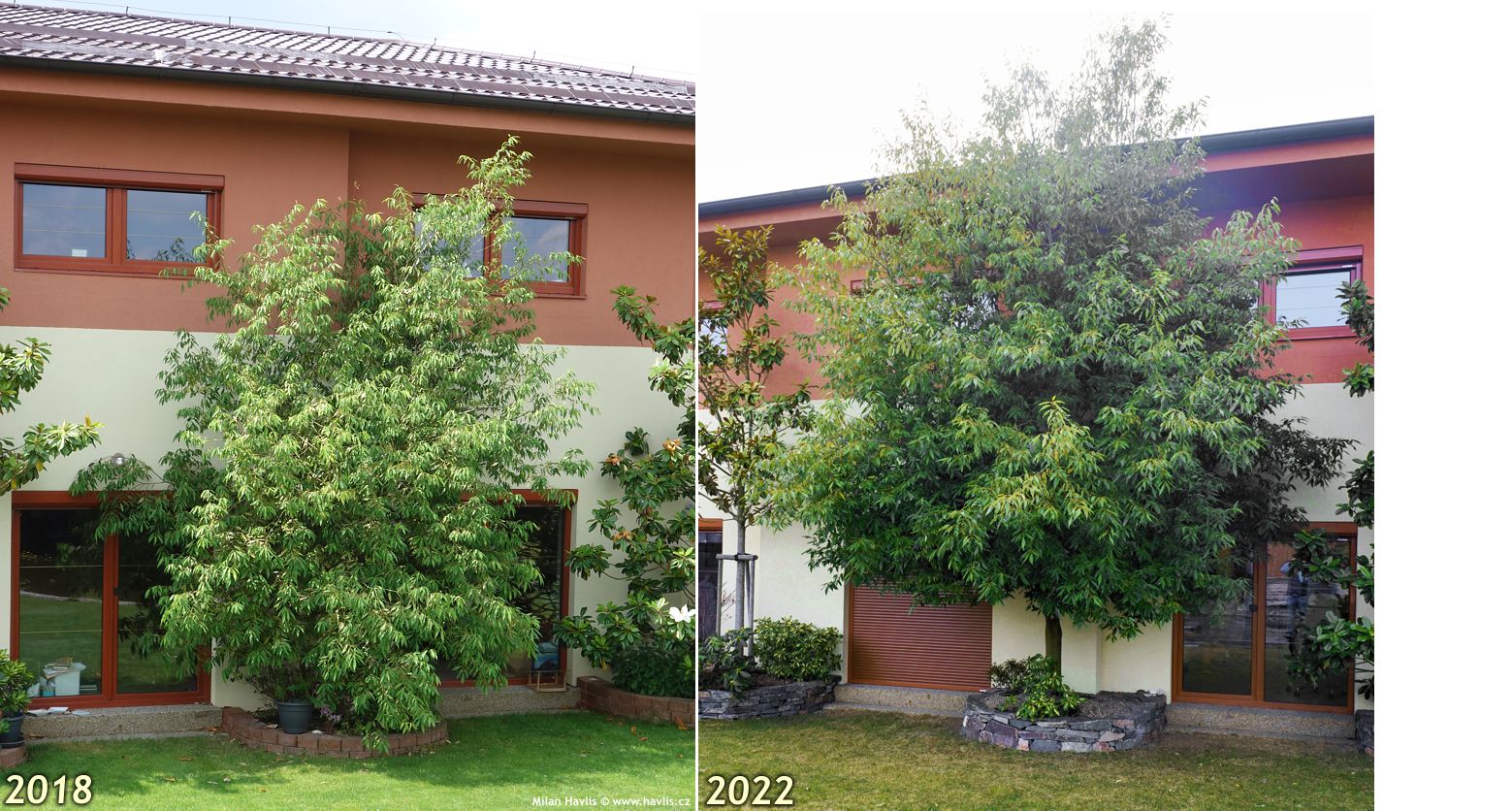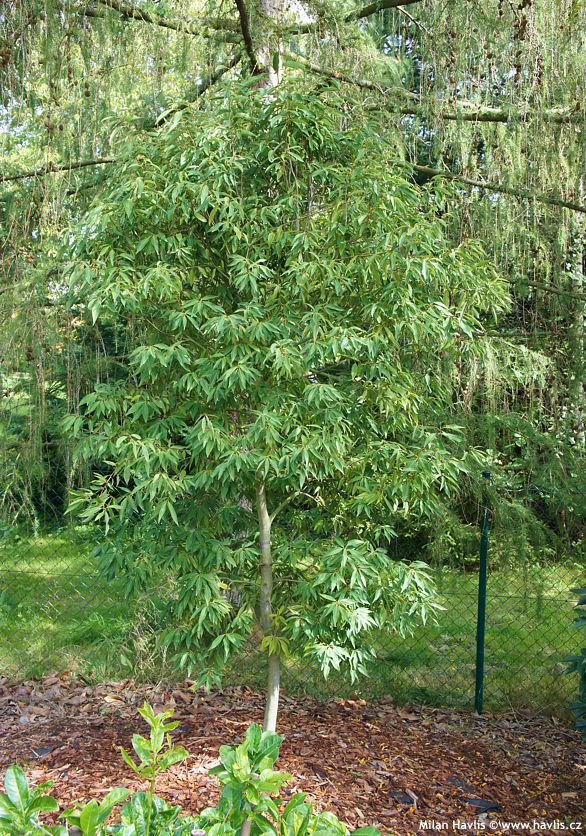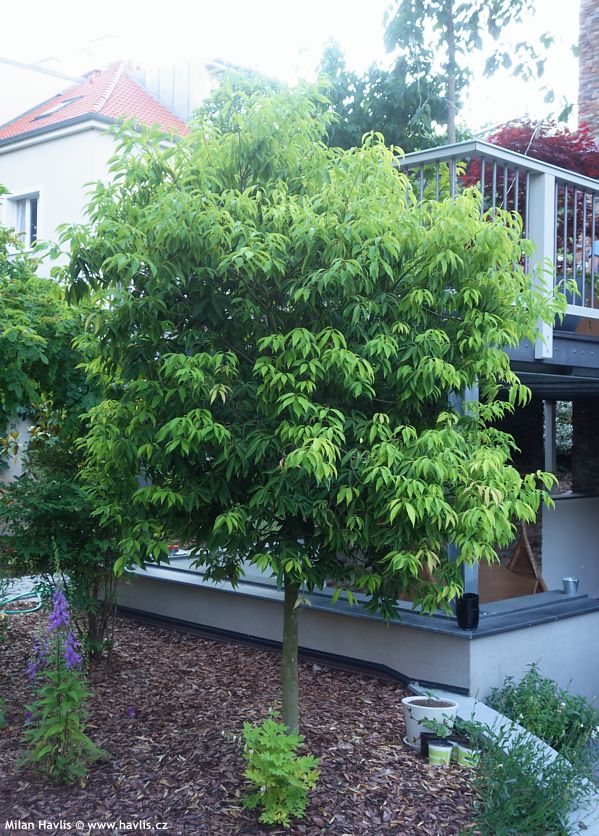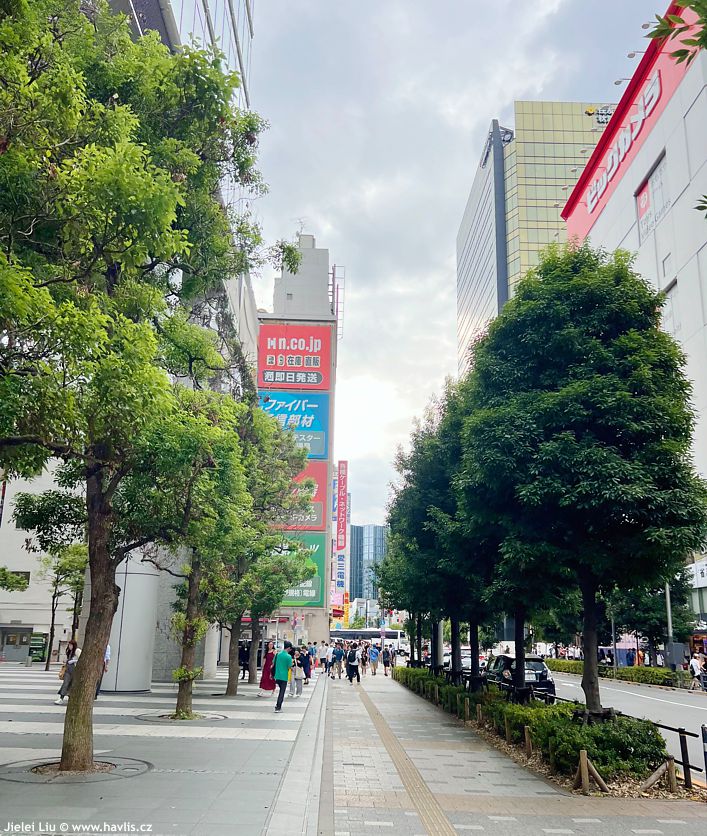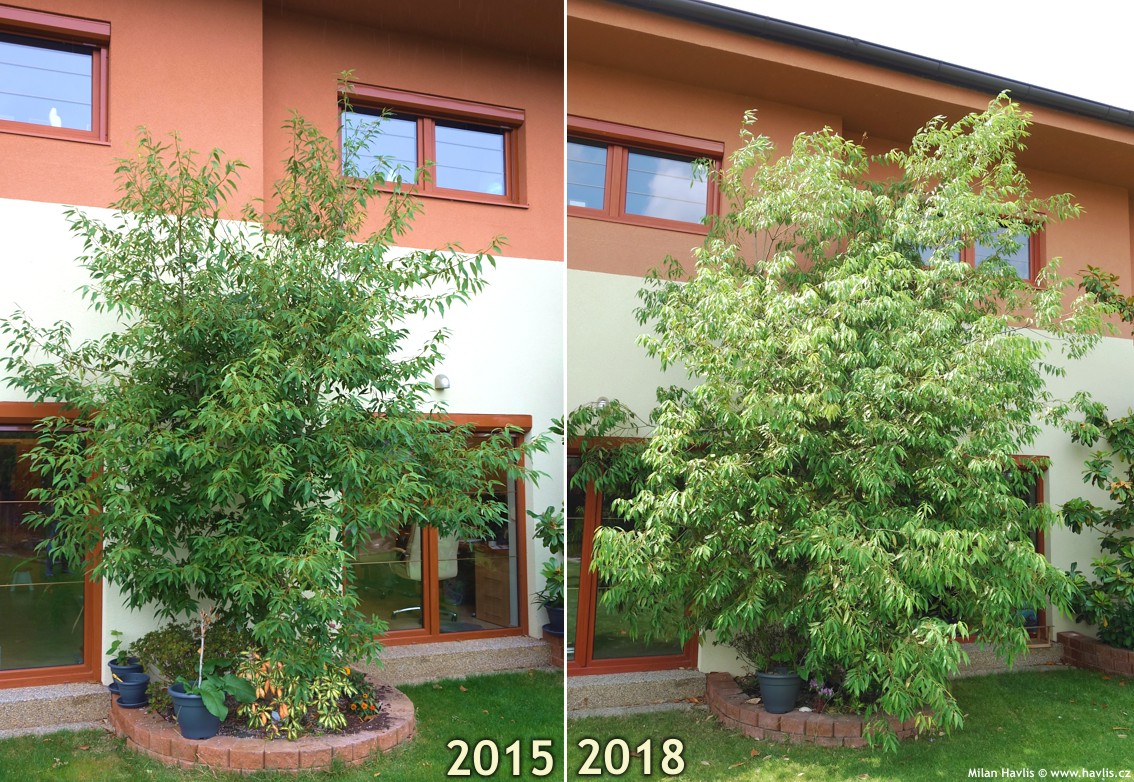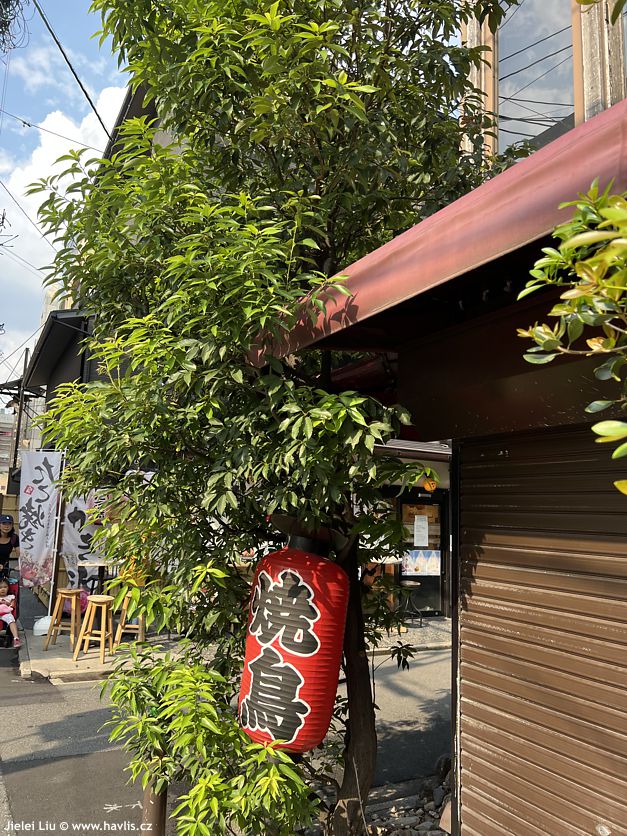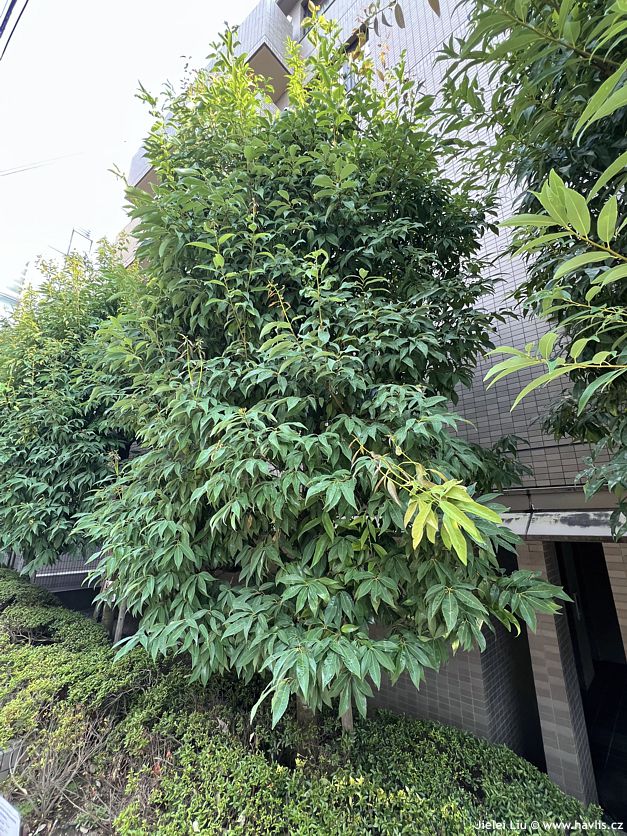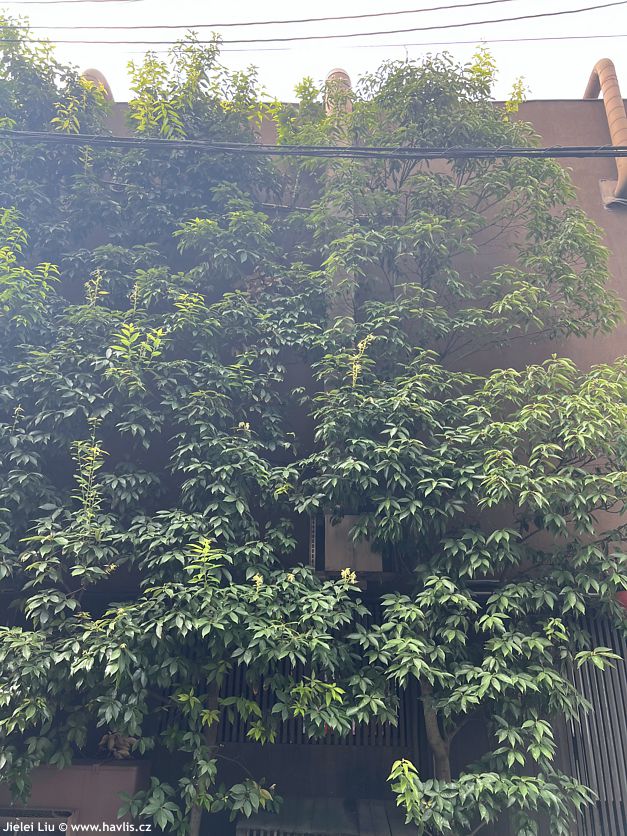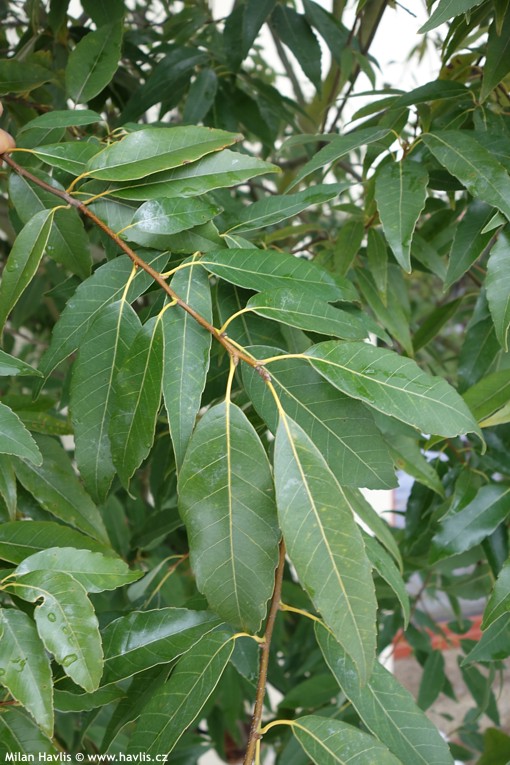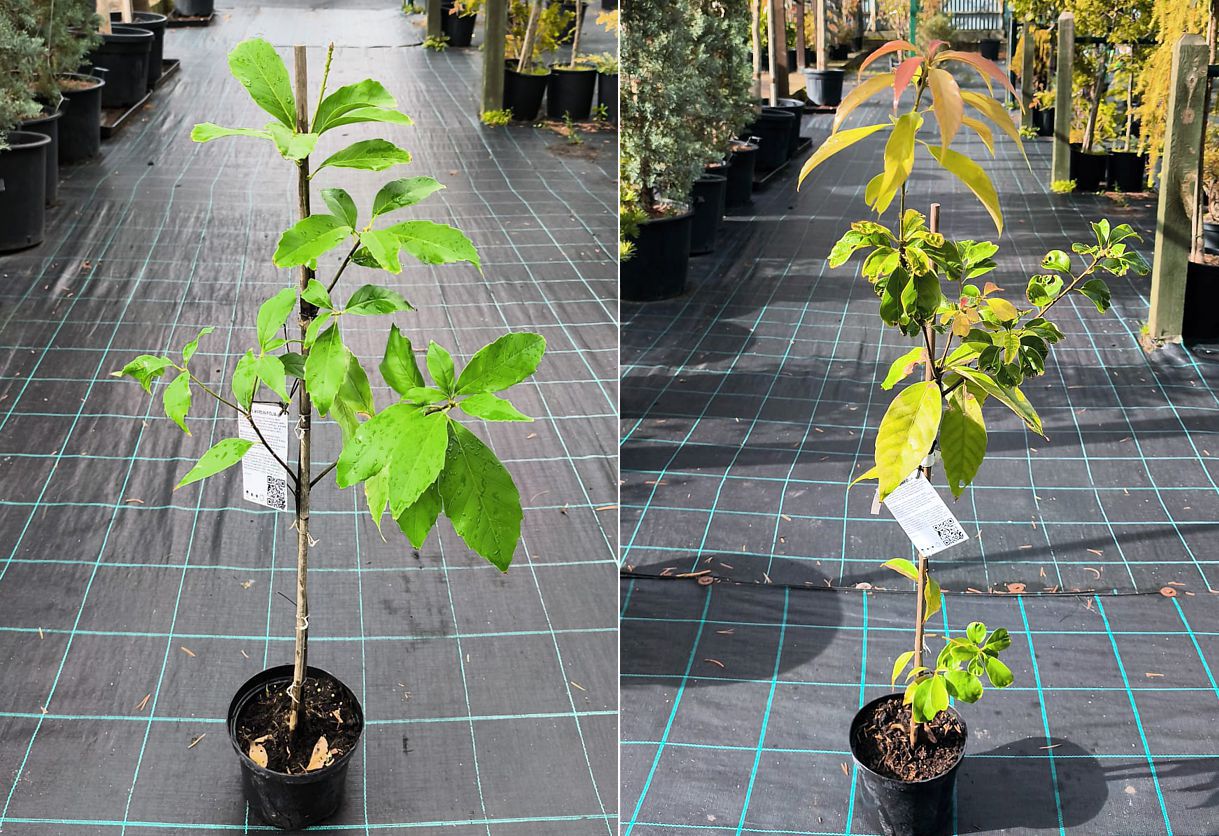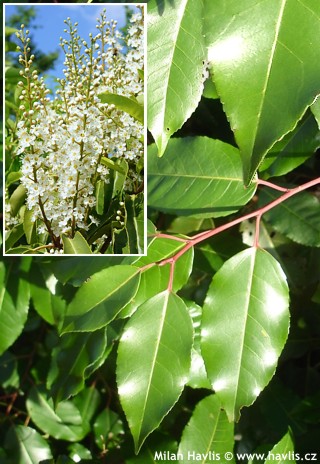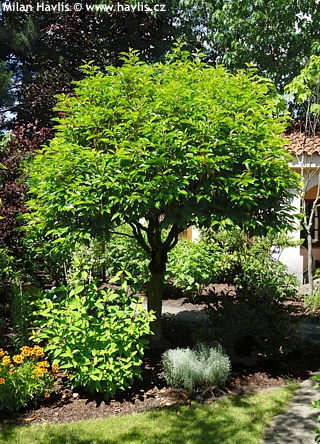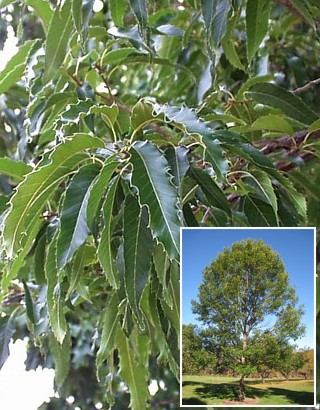Quercus myrsinifolia bamboo-leaf oak, Chinese evergreen oak
Quercus
The genus Quercus – oaks – is one of the richest tree genera of the Northern Hemisphere, comprising approximately 450 to 600 species. They are predominantly found in temperate and subtropical zones, with the highest diversity in North America and East Asia, though they also reach into tropical mountain regions. Oaks can be deciduous or evergreen, ranging from massive trees to small shrubs. They are monoecious, with inconspicuous flowers in catkins pollinated by wind, and their typical fruit is the acorn – a single-seeded nut enclosed in a cup-like structure. Oak leaves are alternate and highly variable: they may be lobed, toothed, serrated, or entire, and often show significant variation even within a single species, which makes identification challenging. Oaks are known for their hard, durable wood and their ability to grow into long-lived, majestic trees. They play an important role in ecosystems and culture – providing food for wildlife, wood for construction, cork, tannins, and medicinal substances. They are also considered symbols of strength and endurance in many mythologies and religions and are often associated with the masculine element.
The bamboo-leaf oak was scientifically described in 1851 by German-Dutch botanist Carl Ludwig Blume, who included it in his work Museum Botanicum Lugduno-Batavum. This species belongs to the section Cyclobalanopsis, known as the "ring-cupped oaks," whose acorns feature distinctive concentric rings on the cup. The species name refers to the resemblance of its leaves to those of the genus Myrsine – or myrtle – reflecting their narrow, glossy shape. In Japan, it is known as shirakashi, meaning "white oak," and holds deep cultural significance. It has long been planted near temples as a symbol of purity, constancy, and protection, and today it is considered one of the most attractive urban trees in Japan, even in small space where they willingly make room just to be able to grow one 😊 Its wood is hard, flexible, and highly valued – used in the making of traditional Japanese wooden swords (bokken), furniture, tools, and temple architecture. In classical Japanese literature and poetry, shirakashi is mentioned as a symbol of perseverance and elegance, and its leaves appear in traditional patterns on textiles and ceramics.
The bamboo-leaf oak is a small to medium-sized evergreen tree whose leaves resemble those of bamboo. They are narrow, elongated to lanceolate, with finely serrated edges or almost entire. New foliage emerges in attractive shades that vary from seedling to seedling and may be bronze, salmon, red, or even deep maroon. Mature leaves are medium to dark green, glossy, and reliably persistent. Unlike cherry laurel or Portuguese laurel, which can be grown as trees in our climate but often retain a shrubby crown shape, the bamboo-leaf oak naturally exhibits a clear tree-like habit. It branches evenly without intervention and forms an elegant silhouette that appears balanced and natural. It typically reaches a height of 5 to 10 meters, forming a compact, dense, and rounded crown.
Although this tree is currently cultivated mainly in warmer parts of the USA, southern Asia, and occasionally in milder regions of Europe, its beauty and proven resilience have brought it into our climate as well. It is favoured by creative landscape architects who appreciate its evergreen quality and unique appearance: thanks to its slightly drooping leaves, the tree exudes a calming, almost Zen-like presence that brings harmony to the garden. In folk tradition, it is believed to bring peace and stability, and its presence in the garden is said to protect the household from misfortune. In some regions, it is also used as a living hedge, shaped to maintain a natural look. The acorns are edible after processing and were historically used as food and as a coffee substitute.
Quercus myrsinifolia is often confused with Quercus glauca, as both belong to the Cyclobalanopsis section and share similar evergreen leaves and acorns with ringed cups. However, they can be distinguished fairly easily. Myrsinifolia has narrower, elongated to lanceolate leaves with fine serrations, often slightly drooping and bamboo-like in appearance. In contrast, glauca has broader, elliptic to ovate leaves with more pronounced teeth, dark green on the upper side and grayish to bluish underneath. New foliage in glauca tends to be bronze to purple, while in myrsinifolia the shades vary widely and may include deep burgundy tones. The acorns of both species are similar, but those of glauca are generally shorter, and the cups usually cover a smaller portion of the nut. Additionally, Quercus glauca tends to grow as a shrub or multi-stemmed tree, whereas myrsinifolia naturally maintains a single-stemmed, tree-like form with a compact crown.
The bamboo-leaf oak is not demanding in terms of soil pH, but slightly acidic conditions are recommended for richer leaf colouration. It thrives best in well-drained, fertile, and moist soil that should not be heavy, although clay in the lower soil profile (30 cm and deeper) is beneficial as a nutrient reservoir. The planting site should be sheltered – not in open, wind-exposed landscapes or on hilltops – and ideally feature a mild microclimate, with full sun to partial shade. During the first three years after planting, it is essential to secure the tree with a strong wind-stabilizing support to help it root and establish. The root zone must remain free – no grass or competing plants should be planted above it. Watering is especially important during frost-free periods in winter, when the tree continues to transpire. It grows relatively quickly (30–40 cm per year), responds well to pruning, and thickens nicely after shaping. Pruning is best done in spring after the last frosts. Its reliable hardiness has been tested down to –23 °C (USDA zone 6), with occasional winter watering (once a month) to prevent desiccation, and it can withstand even stronger frosts for short periods. Keep it mulched.
Last update 20-06-2010, 19-02-2012, 13-10-2025
Goods are shipped all over Europe. For Russia and U.K. and for further details please read about SHIPPING OPTIONS HERE.
Are you interested in a serious discount for orders NOV-FEB? Check your options here.
THE PRICES INCLUDE VAT of 15%. For quick conversion you can use 1 CZK = approx. 0.04 EUR
- STANDARD QUALITY - Plants of this group are 1st class quality with number of branches and overall density adequate to their size and age, considering they were container grown.
- DE LUXE QUALITY - This label guarantees a luxurious quality of manually selected plants that, compared to their height and age, are exceptionally dense and beautiful.
- EXTRA - These plants are usually mature and bigger specimens with exceptional overall appearance.
- STANDARD (as described in the plant form) means a tree with a trunk of 190-210 cm and a crown at the top, unless specified differently. The commercial size for trees is their girth measured in the height of 1m from ground.
- HOBBY - These plants are of the same quality as our standard-quality plants but younger and therefore cheaper.
- SHRUB - a woody plant with branches growing bushy from the ground level.
- HALF-STANDARD or MINI-STANDARD - a small tree with shorter trunk, its size is usually specified.
- FEATHERED - These are trees with branches growing already from the base of the trunk and up along the stem.
- GRASSES and PERENNIALS - Sizes given usually read the diameter of the pot or the clump, as specified.






























